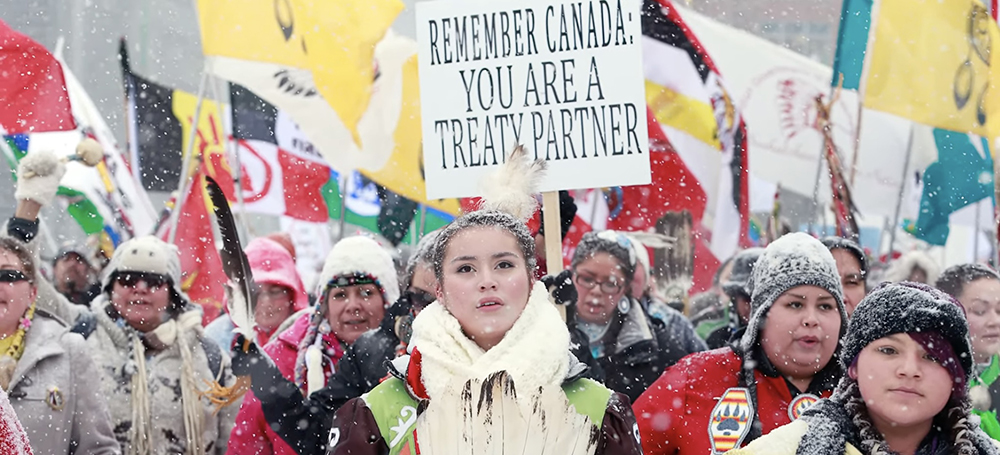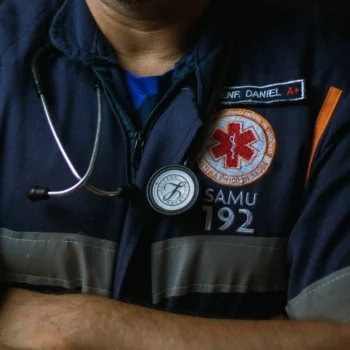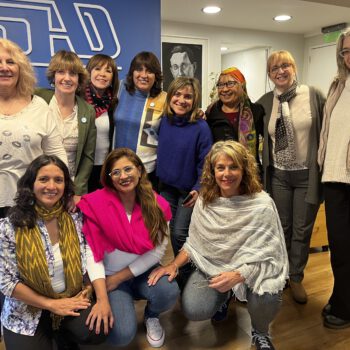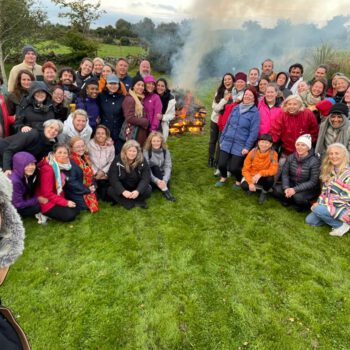An esteemed Anishinaabe elder, traditional knowledge keeper, healer, and historian, Allen’s work has made a generational difference in Canada. His deep Anishinaabek roots make him an ideal conduit between Traditional and Contemporary Worlds. For 30+ years, his work has supported First Nations, Federal and Provincial Governments, and grassroots community efforts. Today he focuses on healing and awareness raising.This post is a short edited excerpt of
Allen’s personal and professional experiences with the current and generational impact of colonizing trauma. Listen to his full interview on The Gifts of Trauma Podcast.

There are two worldviews of Canada. The Indigenous worldview focuses on spirit, identity diversity. It describes the four spirits that came to earth and evolved into the many peoples of the world. Four colours represent those spirits, yellow, white, black and red. Prior to the coming of colonists, our people saw everything as one. But our worldview didn’t work with theirs because they didn’t believe spirit was present in trees, animals and water. When they came and started taking over, we were bombarded with their worldview. But in the beginning, it was different…
There was a time we call the golden age of the fur trade when colonists were a minority who didn’t know how to shelter or feed themselves. So we, the Anishinaabe, the people of the kind heart, always helped out. We had 250 years to get to know each other. But more colonists kept arriving, bringing European diseases, influenza and smallpox, which devastated our populations and left us struggling.
Canada has a unique history that it has buried for a long time. It did not become a country through the usual battles, warfare or buying. When colonists arrived to set up trading posts, they asked, “Can we live with you?” We said, ”Yes, let’s live together,” and made an arrangement through trading. So the second largest country in the world came to be through sharing. Colonists went on to create the British North American Act, and get Queen Victoria’s permission to become the Dominion of Canada. How Canada became a country is such a beautiful story.
But it turned out that despite making treaties, the colonists’ intent was never to share. Five years after Confederacy, they ignored their treaty obligations and created the Indian Act which gave them dominion over us and our lands. This Act is the model many countries subsequently used to dominate indigenous populations with laws. South Africa called it apartheid.
I was born in Winnipeg, and lived in the poorest area, the inner city. As a little kid I got in trouble at school. My hand was strapped almost daily by the head nun, for things I did or didn’t do. So I learned very young that pain was just part of life.
In 1970, they revised the Indian Act to allow parents, or grandparents, to raise children in their homes and stopped taking them away from their families and communities. Before that, since 1887, every child from age 5 to 16 had to attend an Indian Residential School. This was contrary to the treaty that said schools would be built in our communities so that everyone would be equal. But the Indian Act wasn’t about equality. It was about the elimination of our identity, language, worldview, everything that made us strong.
Until I was 5 years old, I was kicked out of schools, and then my grandparents said they would love to have me, to raise me, and I was brought from the city to their community. At the time it was very traumatic because I thought I’d done something wrong; been abandoned. But looking back, it was the greatest thing because I grew up with the values of a small community that looked after its own, that knew how to survive. And love was there, always. My grandparents didn’t raise their children because my mother and uncles had to attend Indian residential schools. I was the first child they raised.
Fortunately the impact of experiencing colonization and Indian Act policies did not affect my community until after World War One. Nobody came to our area, a remote community of less than 400 people without electricity and with only one road. We were left alone and lived the life of our ancestors. My grandfather looked after cattle and my grandmother tended her garden.
My great grandfather was our last hereditary chief. He didn’t want any Interference in practicing his traditional ways. He had his pipe. He had his sweat lodge. When he died in 1950, all of that, even our medicine people, left our community and the Indian Act was implemented.
Now, the impact of colonization started with children. If you want to take over any community, you might go after their warriors, their medicine men, their healers, their women or their elders. But what they did to destroy the spirit of any community, was to take its four or five year old children.
What they left behind was devastation and shame because men were made powerless, warrior societies were made powerless. You see, a few years after the Indian Act was implemented in 1878 they built a penitentiary in Winnipeg and imprisoned everyone who violated its laws. This prison still exists with an 80% indigenous population. Its first occupants were Chiefs who didn’t hold their people in line (with the Indian Act laws). So if, as a father, you didn’t want your babies taken away by priests, you were imprisoned for up to 6 months of hard labour, in the quarry at the Penitentiary.
Since 1878, a child who only speaks Anishinaabe, Ojibwe, Cree or another indigenous language, was punished for the things they knew, their language and culture … Immediately upon arriving at residential schools, their hair was cut off, their garments and blankets taken away, the beautiful beadery that was given to them… all thrown in the garbage. They were deloused, forcibly washed down, and when they cried they were told to be quiet. All a little child knows is to cry… And most went through life not talking about it because the Indian Residential Schools were run by churches. In our community, we they knew to never say anything bad about the church. Even if something bad happened, we couldn’t speak about it. We now know that bad things did happen. It’s all coming to light as the last Indian residential school closed in 1997.
Less than 30 years ago, children were being sent to these schools, for 3, 4 or 5 generations. And to this day, the Canadian Education system doesn’t teach students about the Indian Residential Schools, the Indian Act or our Treaties.
In 2026 the Indian Act will be 150 years old. This archaic law is still on the books because, while there is no other race legislation in the world, the Indian Act stipulates that colonists have to share this country equally with indigenous peoples, to return half of Canada’s vast wealth and reinstate our freedom. But the Canadian government is not willing to fully share what we so generously shared with them, so many years ago.
The Gifts of Trauma is a weekly podcast that features personal stories of trauma, transformation, healing, and the gifts revealed on the path to authenticity. Listen to the interview, and if you like it, please subscribe, rate, review and share it.



